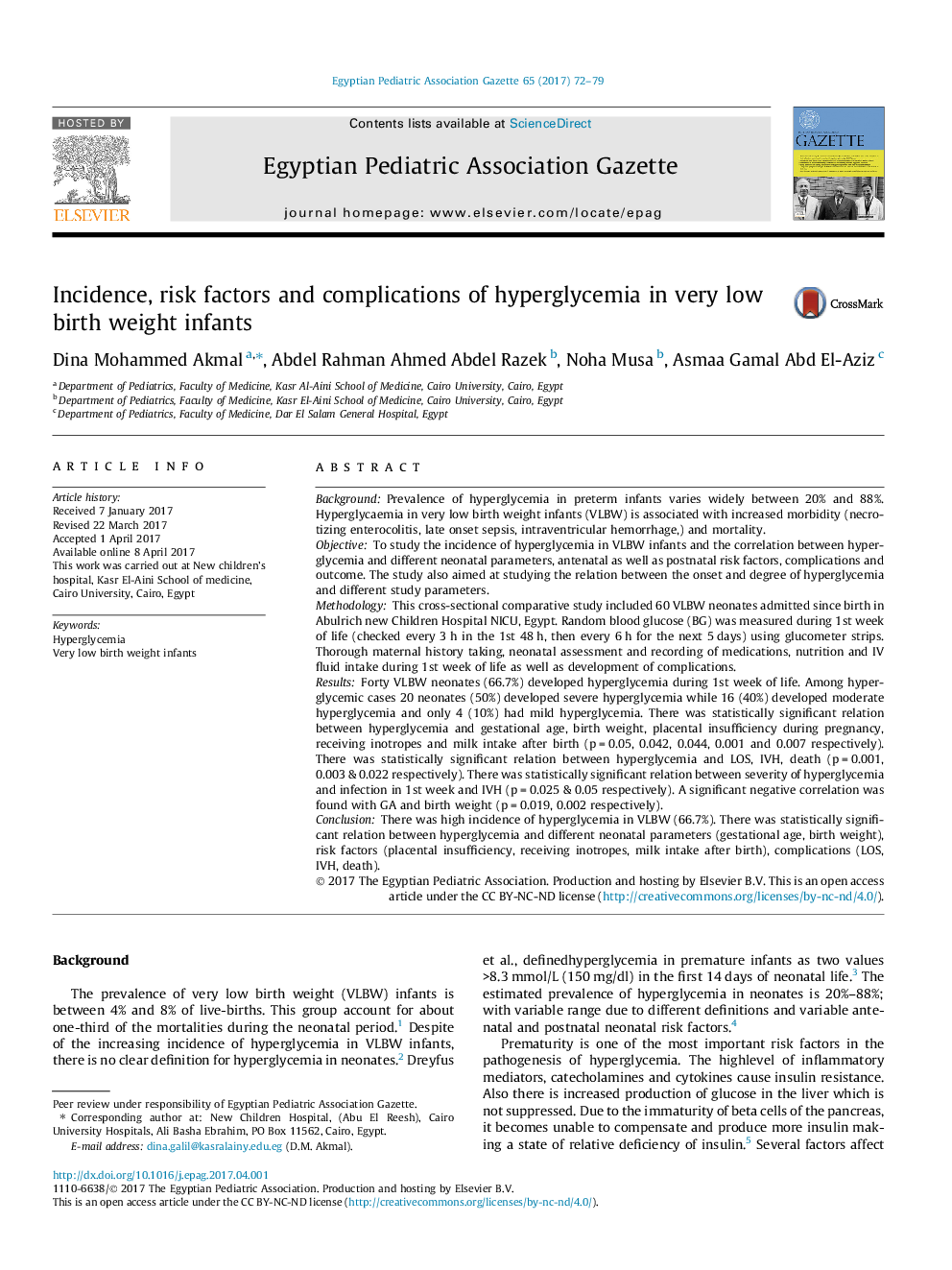| Article ID | Journal | Published Year | Pages | File Type |
|---|---|---|---|---|
| 5718018 | Egyptian Pediatric Association Gazette | 2017 | 8 Pages |
BackgroundPrevalence of hyperglycemia in preterm infants varies widely between 20% and 88%. Hyperglycaemia in very low birth weight infants (VLBW) is associated with increased morbidity (necrotizing enterocolitis, late onset sepsis, intraventricular hemorrhage,) and mortality.ObjectiveTo study the incidence of hyperglycemia in VLBW infants and the correlation between hyperglycemia and different neonatal parameters, antenatal as well as postnatal risk factors, complications and outcome. The study also aimed at studying the relation between the onset and degree of hyperglycemia and different study parameters.MethodologyThis cross-sectional comparative study included 60 VLBW neonates admitted since birth in Abulrich new Children Hospital NICU, Egypt. Random blood glucose (BG) was measured during 1st week of life (checked every 3 h in the 1st 48 h, then every 6 h for the next 5 days) using glucometer strips. Thorough maternal history taking, neonatal assessment and recording of medications, nutrition and IV fluid intake during 1st week of life as well as development of complications.ResultsForty VLBW neonates (66.7%) developed hyperglycemia during 1st week of life. Among hyperglycemic cases 20 neonates (50%) developed severe hyperglycemia while 16 (40%) developed moderate hyperglycemia and only 4 (10%) had mild hyperglycemia. There was statistically significant relation between hyperglycemia and gestational age, birth weight, placental insufficiency during pregnancy, receiving inotropes and milk intake after birth (p = 0.05, 0.042, 0.044, 0.001 and 0.007 respectively). There was statistically significant relation between hyperglycemia and LOS, IVH, death (p = 0.001, 0.003 & 0.022 respectively). There was statistically significant relation between severity of hyperglycemia and infection in 1st week and IVH (p = 0.025 & 0.05 respectively). A significant negative correlation was found with GA and birth weight (p = 0.019, 0.002 respectively).ConclusionThere was high incidence of hyperglycemia in VLBW (66.7%). There was statistically significant relation between hyperglycemia and different neonatal parameters (gestational age, birth weight), risk factors (placental insufficiency, receiving inotropes, milk intake after birth), complications (LOS, IVH, death).
